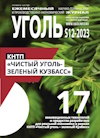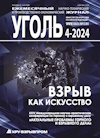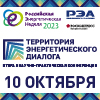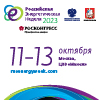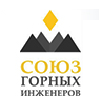
ECOLOGY
Original Paper
UDC 639.1.053 © M.A. Osintseva, E.A. Zhidkova, A.Yu. Prosekov, A.D. Kuznetsov, A.O. Rada, N.V. Burova, 2022
ISSN 0041-5790 (Print) • ISSN 2412-8333 (Online) • Ugol’ – Russian Coal Journal, 2022, ¹ S12, pp. 132-141
DOI: http://dx.doi.org/10.18796/0041-5790-2022-S12-132-141
Title
ASSESSMENT OF THE VEGETATION INDEX OF COAL MINE DUMPS BASED ON THE NDVI DATA
Authors
Osintseva M.A.1, Zhidkova E.A.1, Prosekov A.Yu.1, Kuznetsov A.D.1, Rada A.O.1, Burova N.V.1
1 Kemerovo State University, Kemerovo, 650000, Russian Federation
Authors Information
Osintseva M.A., PhD (Engineering), Head of Project Department, Kemerovo State University,e-mail k1marial@inbox.ru
Zhidkova E.A., Doctor of Economic Sciences, Associate Professor, Vice-Rector for Science and Innovation,e-mail 291154@mail.ru
Prosekov A.Yu., Doctor of Economic Sciences, Professor, Rector, Corresponding Member of the Russian Academy of Sciences, e-mail: aprosekov@rambler.ru
Kuznetsov A.D., Director of the Computing Engineering Center, e-mail adkuz@inbox.ru
Rada A.O., PhD (Engineering), Director of the Digital Institute,e-mail radaartem@mail.ru
Burova N.V., Director of the Center for Landscape Architecture, e-mail centrla@mail.ru
Abstract
The purpose of the study is to investigate the efficiency of using the vegetation index of coal mine dumps to assess the in-situ condition of the vegetation cover using an abandoned site at one of the Kuzbass coal mine dumps as an example. A Supercam S250F unmanned aerial vehicle equipped with an automatic control system, the GPS/GLONASS navigation system, an onboard 24 Megapixel camera with a 20 mm lens, a multispectral camera and a thermal imager was used for high-precision aerial photography to create a site plan based on the data obtained. Route reconnaissance surveys, during which a general geobotanical evaluation of the territory was made, were performed on the experimental site as an alternative method. The survey object was the territory of one of the waste dumps of Taldinsky strip mine in the Prokopyevsk municipal district of the Kemerovo Region. The surveys were conducted in August 2021. When comparing the results of the two methods to determine the state of the vegetation cover on the territory disturbed by human activity, a conclusion was made that the NVDI method was more comprehensive in terms of the data obtained. In addition to the static determination of the current vegetation cover condition, this study can allow assessing the effectiveness of reclamation of the disturbed areas. To assess the quality of reclamation, the NDVI index should be measured periodically, with subsequent comparison of the obtained data.
Keywords
Normalized Difference Vegetation Index (NDVI), Anthropogenic impact, Coal, Reclamation, Disturbed lands, Monitoring, Unmanned aerial vehicle, Remote sensing of land, Remote sensing data, Kemerovo Region - Kuzbass.
References
1. Xue J. & Su B. Significant remote sensing vegetation indices: A review of developments and applications. Journal of Sensors, 2017, (2017). DOI: 10.1155/2017/1353691.
2. NDVI – theory and practice. [Electronic resource]. Available at: http://gis-lab.info/qa/ndvi.html (accessed 15.11.2022).
3. Hipel K.W., Hegazy T. & Yousefi S. Combined strategic and tactical negotiation methodology for resolving complex brownfield conflicts. Pesquisa Operacional, 2010, Vol. 30, (2), pp. 281-304. DOI: 10.1590/S0101-74382010000200003.
4. Limasset E., Pizzol L., Merly C. et al. Points of attention in designing tools for regional brownfield prioritization. Science of the Total Environment, 2018, (622-623), pp. 997-1008. DOI: 10.1016/j.scitotenv.2017.11.168.
5. Ignatyeva M., Yurak V. & Pustokhina N. Recultivation of post-mining disturbed land: Review of content and comparative law and feasibility study. Resources, (2020), Vol. 9, (6). DOI: 10.3390/RESOURCES9060073.
6. Mining, Metals & Minerals. [Electronic resource]. Availaible at.: https://www.statista.com/markets/410/topic/954/mining-metals-minerals/#overview (accessed 15.11.2022).
7. Alto Consulting Group. [Electronic resource]. Availaible at.: https://alto-group.ru (accessed 15.11.2022).
8. Vegetation indices. Geomatika, 2011, (2), pp. 98-102. (In Russ.).
9. Li L., Yue Y., Qin F. et al. Multi-scale characterization of spatial variability of soil organic carbon in a semiarid zone in Northern China. Sustainability, 2018, Vol. 14, (15). DOI: 10.3390/su14159390.
10. Ma Z., Dong C., Lin K. et al. A Global 250-m Downscaled NDVI product from 1982 to 2018. Remote Sensing, 2022, Vol. 14, (15). DOI: 10.3390/rs14153639.
11. Zenkov I.V. Remote sensing in solving environmental problems of forest recultivation in coal pits of Siberia. Vestnik Sibirskogo gosudarstvennogo aerokosmicheskogo universiteta imeni M.F. Reshetneva, 2016, Vol. 17 (1), pp. 36-44. (In Russ.).
12. Isaev A.S., Bartalev S.A., Lupyan E.A., et al. Satellite sensing as a unique tool of forest monitoring in Russia. Vestnik Rossijskoj akademii nauk, 2014, Vol. 84, (12), pp. 1073-1079. (In Russ.).
13. Mounzer Nour. Development of a methodology for the application of satellite imagery data to forest monitoring. PhD (Engineering) diss. abstract: Specialization: 25.00.34 «Aerospace studies of the Earth, photogrammetry» / Mounzer Nour. Moscow, 2021, 24 p. (In Russ.).
14. Wu Z., He H.S., Liang Y.et al. Determining relative contributions of vegetation and topography to burn severity from LANDSAT imagery. Environmental Management, 2018, (52), pp. 821-836. DOI: 10.1007/s00267-013-0128-3.
15. Sonnentag O., Hufkens K., Teshera-Sterne C. et al. Digital repeat photography for phenological research in forest ecosystems. Agricultural and Forest Meteorology, 2012, (152), pp. 159-177. DOI: 10.1016/j.agrformet.2011.09.009.
16. Roy D.P., Kovalskyy V., Zhang H.K. et al. Characterization of Landsat-7 to Landsat-8 reflective wavelength and normalized difference vegetation index continuity. Remote Sensing of Environment, 2016, (185), pp. 57-70. DOI: 10.1016/j.rse.2015.12.024.
17. Ko D.W., Kim D., Narantsetseg A.et al. Comparison of field- and satellite-basedvegetation cover estimation methods. Journal of Ecology and Environment, 2017, Vol. 41, (5). DOI: 10.1186/s41610-016-0022-z.
18. Bergstedt J., Westerberg L. & Milberg P. In the eye of the beholder: Bias and stochastic variation in cover estimates. Plant Ecology, 2017, (204), pp. 271-283. DOI: 10.1007/s11258-009-9590-7.
19. Petrova T.A. & Rudzish E. A method to assess the effectiveness of ameliorants in reclamation of disturbed lands. Vestnik Evrazijskoj nauki, 2021, Vol. 6, (13), pp. 271-283. (In Russ.).
20. Tackenberg O. A new method for non-destructive measurement of biomass, growth rates, vertical biomass distribution and dry matter content based on digital image analysis. Annals of Botany, 2007, Vol. 99, (4), pp. 777-783. DOI: 10.1093/aob/mcm009.
21. Kiani M., Raave H., Simojoki A. et al. Recycling lake sediment to agriculture: Effects on plant growth, nutrient availability, and leaching. Science of the Total Environment, 2021, (753). DOI: 10.1016/j.scitotenv.2020.141984.
22. Elsayed S., Barmeier G., Schmidhalter U. Passive reflectance sensing and digital image analysis allows for assessing the biomass and nitrogen status of wheat in early and late tillering stages. Frontiers in Plant Science, 2018, Vol. 10, (9). DOI: 10.3389/fpls.2018.01478.
23. Estoque R.C. & Murayama Y. Monitoring surface urban heat island formation in a tropical mountain city using Landsat data (1987–2015). ISPRS Journal of Photogrammetry and Remote Sensing, 2017, (133), pp. 18-29. DOI: 10.1016/j.isprsjprs.2017.09.008.
24. Moghaddam M.H.R., Sedighi A., Fasihi S. et al. Effect of environmental policies in combating aeolian desertification over Sejzy Plain of Iran. Aeolian Research, 2018, (35), pp. 19-28. DOI: 10.1016/j.aeolia.2018.09.001.
25. Fu Y., Li J., Weng Q. et al. Characterizing the spatial pattern of annual urban growth by using time series Landsat imagery. Science of The Total Environment, 2019, (666), pp. 274-284. DOI: 10.1016/j.scitotenv.2019.02.178.
26. Pericak A.A., Thomas C.J., Kroodsma D.A. et al. Mapping the yearly extent of surface coal mining in Central Appalachia using Landsat and google earth engine. PLoS ONE, 2018, Vol. 13, (7). DOI: 10.1371/journal.pone.0197758.
27. M.K. Firozjaei, A. Sedighi, H.K. Firozjaei et al. A historical and future impact assessment of mining activities on surface biophysical characteristics change: A remote sensing-based approach. Ecological Indicators, 2021, (122). DOI: 10.1016/j.ecolind.2020.107264.
28. Jin X., Zarco-Tejada P.J., Schmidhalter U. et al. High-throughput estimation of crop traits: A review of ground and aerial phenotyping platforms. IEEE Geoscience and Remote Sensing Magazine, 2021, Vol. 9, (1), pp. 200-231. DOI: 10.1109/MGRS.2020.2998816.
29. Wasonga D.O., Yaw A., Kleemola J. et al. Red-green-blue and multispectral imaging as potential tools for estimating growth and nutritional performance of cassava under deficit irrigation and potassium fertigation. Remote Sensing, 2021, Vol. 13, (4). DOI: 10.3390/rs13040598.
30. Marin J., Yousfi S., Mauri P.V. et al. RGB vegetation indices, NDVI, and biomass as indicators to evaluate C3 and C4 turfgrass under different water conditions. Sustainability, 2020, Vol. 12, (6). DOI: 10.3390/su12062160.
31. Gee C., Denimal E., Merienne J. et al. Evaluation of weed impact on wheat biomass by combining visible imagery with a plant growth model: towards new non-destructive indicators for weed competition. Precision Agriculture, 2021, Vol. 22, (2). P. 550-568. DOI: 10.1007/s11119-020-09776-6.
32. Huang S., Tang L., Hupy J.P. et al. A commentary review on the use of normalized difference vegetation index (NDVI) in the era of popular remote sensing. Journal of Forestry Research, 2021, (22). DOI: 10.1007/s11676-020-01155-1.
33. Kuzevic S., Bobikova D. & Kuzevicova Z. Land cover and vegetation coverage changes in the mining area – A case study from Slovakia. Sustainability, 2022, Vol. 14, (3). DOI: 10.3390/su14031180.
34. Yang Z., Shen Y., Li J. et al. Unsupervised monitoring of vegetation in a surface coal mining region based on NDVI time series. Environmental Science and Pollution Research, 2022, Vol. 29, (18), pp. 26539-26548. DOI: 10.1007/s11356-021-17696-9.
35. Khelifi F., Caporale A.G., Hamed Y. et al. Bioaccessibility of potentially toxic metals in soil, sediments and tailings from a north Africa phosphate-mining area: Insight into human health risk assessment. Journal of Environmental Management, 2021, (279). DOI: 10.1016/j.jenvman.2020.111634.
36. Mishra P.K., Rai A. & Rai S.C. Land use and land cover change detection using geospatial techniques in the Sikkim Himalaya, India. The Egyptian Journal of Remote Sensing and Space Science, 2020, Vol. 23, (2), pp. 133-143. DOI: 10.1016/j.ejrs.2019.02.001.
37. Karan S.K., Samadder S.R. & Maiti S.K. Assessment of the capability of remote sensing and GIS techniques for monitoring reclamation success in coal mine degraded lands. Journal of Environmental Management, 2016, (182), pp. 272-283. DOI: 10.1016/j.jenvman.2016.07.070.
38. Uddin Siddiqui A. & Kumar Jain M. Change analysis in land use land cover due to surface mining in Jharia coalfield through Landsat time series data. Materials Today: Proceedings, 2021, (49), pp. 3462-3468.
39. Jiang L., Liu Y., Wu S. et al. Analyzing ecological environment change and associated driving factors in China based on NDVI time series data. Ecological Indicators, 2021, (129). DOI: 10.1016/j.ecolind.2021.107933.
40. Talgamer B.L. & Galaida K.P. A method for reclamation of non-mining flanks of open-pit mines. Patent for Invention No. 2754753 E21C 41/32 (RF), Applic. No. 2021100173, claim 12.01.2021, publ. 07.09.2021, Bull. 25. (In Russ.).
41. Postnov D.A. Technology for obtaining a universal reclamation agent. Patent for Invention No. 2753423 E21C 41/32 (RF), Applic. No. 2021114341, claim 20.05.2021, publ. 16.08.2021, Bull. 23. (In Russ.).
44. Komarov A.A. & Komarov A.A. Assessment of the grass stand condition using the NDVI vegetation index. Izvestiya Sankt-Peterburgskogo gosudarstvennogo agrarnogo universiteta, 2018, (51), pp. 124-129. (In Russ.).
45. Chaschin A.N. & Kondratyeva M.A. Use of remote sensing data for assessing the self-organized vegetation rates at coal dumps in the Kizelovsky basin. Geograficheskij vestnik, 2019, (2), pp. 135-147. (In Russ.).
46. Dubrovskaya S.A.& Noreika S.Yu. Multi-year geoinformation monitoring of mining landscapes in the steppe zone of the Russian Federation using spectral index. Nauchnye vedomosti Belgorodskogo gosudarstvennogo universiteta, Seriya: Estestvennye nauki, 2019, Vol. 43, (1), pp. 52-62. (In Russ.).
47. Vlasyuk L.I. Strategic priority of ecologization of the Kuzbass economy: fund of land reclamation. Upravlencheskoe konsul?tirovanie, 2021, Vol. 146, (2), pp. 69-78. (In Russ.).
48. Geography of the Kemerovo Region. [Electronic resource]. Available at: https://ru.wikipedia.org/wiki/Ãåîãðàôèÿ_Êåìåðîâñêîé_îáëàñòè (accessed 15.11.2022). (In Russ.).
49. Udodov Yu.V., Yegorova N.T. & Bagmet G.N. Geological and geomorphological characteristics and useful minerals of the Kemerovo region. Vestnik Kuzbasskogo gosudarstvennogo tehnicheskogo universiteta, Seriya: Biologicheskie, tehnicheskie nauki i nauki o Zemle, 2017, (1), pp. 53-59. (In Russ.).
50. Report on the condition and protection of the environment in the Kemerovo region – Kuzbass in 2019. Kemerovo, Department of Natural Resources and Environment of the Kemerovo Region, 2020, 219 p. (In Russ.).
51. Official website of the Ministry of Coal Industry of Kuzbass. [Electronic resource]. Available at: https://mupk42.ru/ru/industry/pokazateli (accessed 15.11.2022). (In Russ.).
52. Podurets O.I. Technogenesis and soil formation in the Southern forest-steppe of the Kemerovo Region. Vestnik Kuzbasskogo gosudarstvennogo tehnicheskogo universiteta, Seriya: Biologicheskie, tehnicheskie nauki i nauki o Zemle, 2018, (1), pp. 68-73. (In Russ.).
Acknowledgements
The research was carried out with financial support of the ‘Development and implementation of complex technologies in the areas of exploration and extraction of minerals, industrial safety, bioremediation, creation of new deep conversion products from coal raw materials while consistently reducing the environmental impact and risks to human life’ Integrated Scientific and Technical Programme of the Full Innovation Cycle, approved by Order No. 1144-ð of the Government of the Russian Federation as of May 11, 2022.
For citation
Osintseva M.À., Zhidkova E.A., Prosevkov A.Yu., Kuznetsov A.D., Rada A.O. & Burova N.V. Assessment of the vegetation index of coal mine dumps based on the NDVI data. Ugol’, 2022, (S12), pp. 132-141. (In Russ.). DOI: 10.18796/0041-5790-2022-S12-132-141.
Paper info
Received November 1, 2022
Reviewed November 15, 2022
Accepted November 30, 2022


